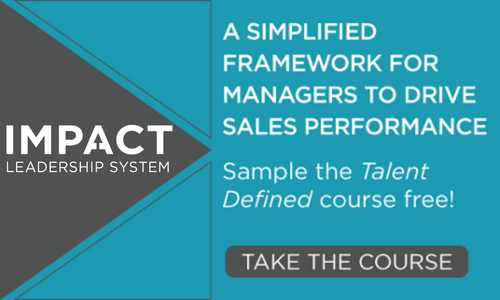
Having a robust sales pipeline may help the sales team, sales managers, and the C-suite sleep better at night. But if there’s little or slow movement of those deals through the pipeline, everyone will spend more time counting sheep than counting money.
After all, opportunities in the pipeline don’t pay the bills. Only closed/won deals produce revenue.
So generating leads is only part of the equation for successful sales and marketing organizations. Keeping those leads moving through the pipeline and shorting the sales cycle is equally important.
6 Ways Organizations Can Improve the Efficiency of the Pipeline
1. Define a Sales Process/Steps
What are the steps that must be completed in order for a sales lead to become a new customer?
The most common sales cycle stages include:
- Target (Identify and pre-qualify your prospect.)
- Connect (Engage your prospect and schedule your first meeting.)
- Discovery (Complete lead qualification and needs analysis)
- Assignment (Define the prospect’s business problem and secure commitment to explore a solution.)
- Proposal (a recommended solution is presented to the prospect.)
- Close (a contract is executed or the deal is lost).
There may be sub-steps in each of these stages. Does each activity your salespeople complete with the prospect necessary? Does each step actually advance the sale? More importantly, are the steps in your sales process closely aligned to the steps of your buyer’s journey?
Their journey typically has an Awareness Stage (the buyer becomes aware they have a problem), Consideration Stage (The buyer defines their problem and considers options to solve it.), and the Decision Stage (The buyer evaluates and decides on the right solution).
It’s the job of a salesperson to remove as much friction in this process as possible and help the buyer efficiently move through these stages.
2. Establish Pipeline KPIs
Key performance metrics (KPIs) will allow you to track the progress of an opportunity from lead generation to close.
Measuring and closely monitoring these metrics will help you see which parts of your sales process are accelerating the buyer’s journey and which ones are slowing it down. Once the bottlenecks are identified you can make appropriate adjustments that will improve the efficiency of the pipeline.
3. Build Sales Plays
Sales plays are prescribed actions your salespeople should complete when faced with various sales scenarios.
For example, what are the actions a salesperson should take in order to secure the first appointment with a target prospect?
A sales play will map out a series of messaging tactics designed to engage and connect with a decision-maker. The tactics may include call guides, voice mail scripts, email templates, recommended sale collateral, and social media interaction.
A good sales play will not only prescribe the specific actions but also detail the sequence and timing of each activity. The best sales plays leverage what has proven to work in real-life scenarios. Talk to your sales team to identify their proven best practices. Then document them in a way that makes them scalable and repeatable across the entire team.
4. Create An Easily Accessible Content Library of Resources
Help your team stop selling and start educating their prospects. This will set them apart from the crowd and rise above the noise level in the market.
Decision-makers spend much of their buying journey researching and trying to educate themselves so they can make the best decision and solve their business problem. If your sales team can become a trusted resource by sharing relevant content, they can help streamline the buyer’s journey and shorten the sales cycle.
5. Deploy Sales Enablement Tools
You need sales enablement tools that are customized to support your business objectives and ones that your team knows how to use.
A CRM is an essential tool to monitor and measure the sales pipeline. However, if you’re just using your CRM to support management reporting, you’re missing the boat. Today’s CRMs have the functionality to actually improve the productivity, efficiency, and performance of a salesperson.
Does your’ s have that kind of impact? If not, you may have the wrong tool or your team may need additional training on how to get the most out of it.
6. Provide a Consistent Supply of Qualified Leads
A sales pipeline is non-existent without leads that are going into the “top of the funnel”.
When the flow of new leads into the pipeline is slow or non-existent, salespeople tend to hold onto unqualified leads for too long. They bog down and clog the pipeline with their lack of movement as they waste the sales team’s time and attention.
Conclusion
It’s important to remember that the design and management of your sales pipeline never ends. It requires constant oversight and continuous optimization.
Processes, tactics, and tools that were effective last year may not work as well this year. Market conditions, your prospects, your sales team, and the tools/resources at your disposal are always changing.
Staying focused on continuously improving the efficiency of your pipeline will help you stay ahead of the curve. And it may help you maintain healthy sleep patterns as well.





